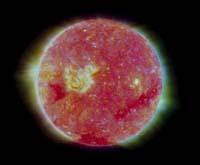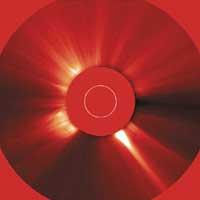Prediction of solar storms
2009/05/10 Kortabitarte Egiguren, Irati - Elhuyar Zientzia
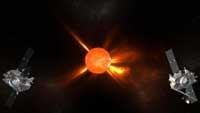
Solar storms can now be predicted in the same way meteorologists announce hurricanes on Earth. In fact, the two twin probes of the NASA Stereo project are receiving images of solar storms since October 2006 and for the first time they have received three-dimensional images of the Sun. Images of unprecedented precision. According to experts, these images will help to know better the physics of the Sun and, in passing, to predict solar storms.
From the Sun to Earth
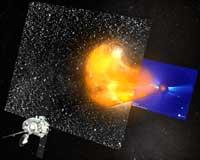
( Walt Feimer, NASA´s Goddard Spacelight Center)
Solar storms are flows of ions that occasionally leave the Sun. They are the largest explosions that occur in the Solar System and can cause great damage to the Earth. In fact, they tend to influence radio communications, satellite activity, and electrical distribution systems. They can also be dangerous for space ships and astronauts.
Therefore, it is important that the prediction of solar storms is as accurate as possible. These three-dimensional images will help them, they will know exactly where the ionic eruptions occur, and thus the meteorological forecasts of space can predict which direction they will follow. On Earth, meteorologists announce hurricanes.
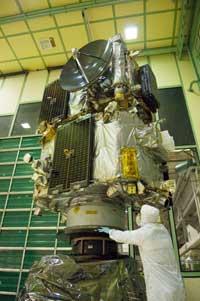
They also behave like hurricanes and, often, they are called solar hurricanes. They are able to launch a billion tons of plasma into space thousands of kilometers per hour. However, the effects that a solar storm can cause depend on the size and speed of that storm, and also on its direct or indirect impact on the Earth's orbit.
The process of detection and/or prediction of the same is similar to that carried out with the data of terrestrial satellites. They see the interior of the hurricane and follow it from its origin to the coast. In the case of the Stereo project, one probe ahead and the other behind the Earth complete the tour around the Sun. However, both will measure the ion flows that occur in the solar corona from two different points of view.
The information probes on these storms have been sent properly equipped to space: telescopes, solar wave meters, devices prepared specifically to collect emitted particles, etc.
In short, the main objective of the project is that all this information allows scientists to obtain an extraordinary vision of the anatomy of storms that approach Earth. To do this, when the storms of the solar corona reach the earth's orbit, the sensors of the satellites carry out on-site measurements of the solar storm.
In this way, experts are getting a lot of information about the internal functioning of these storms. This information allows experts to predict when the solar storm will arrive on Earth and how much energy will be released. That is, to what extent it could cause damage, let's say.
Published in 7k

Gai honi buruzko eduki gehiago
Elhuyarrek garatutako teknologia



